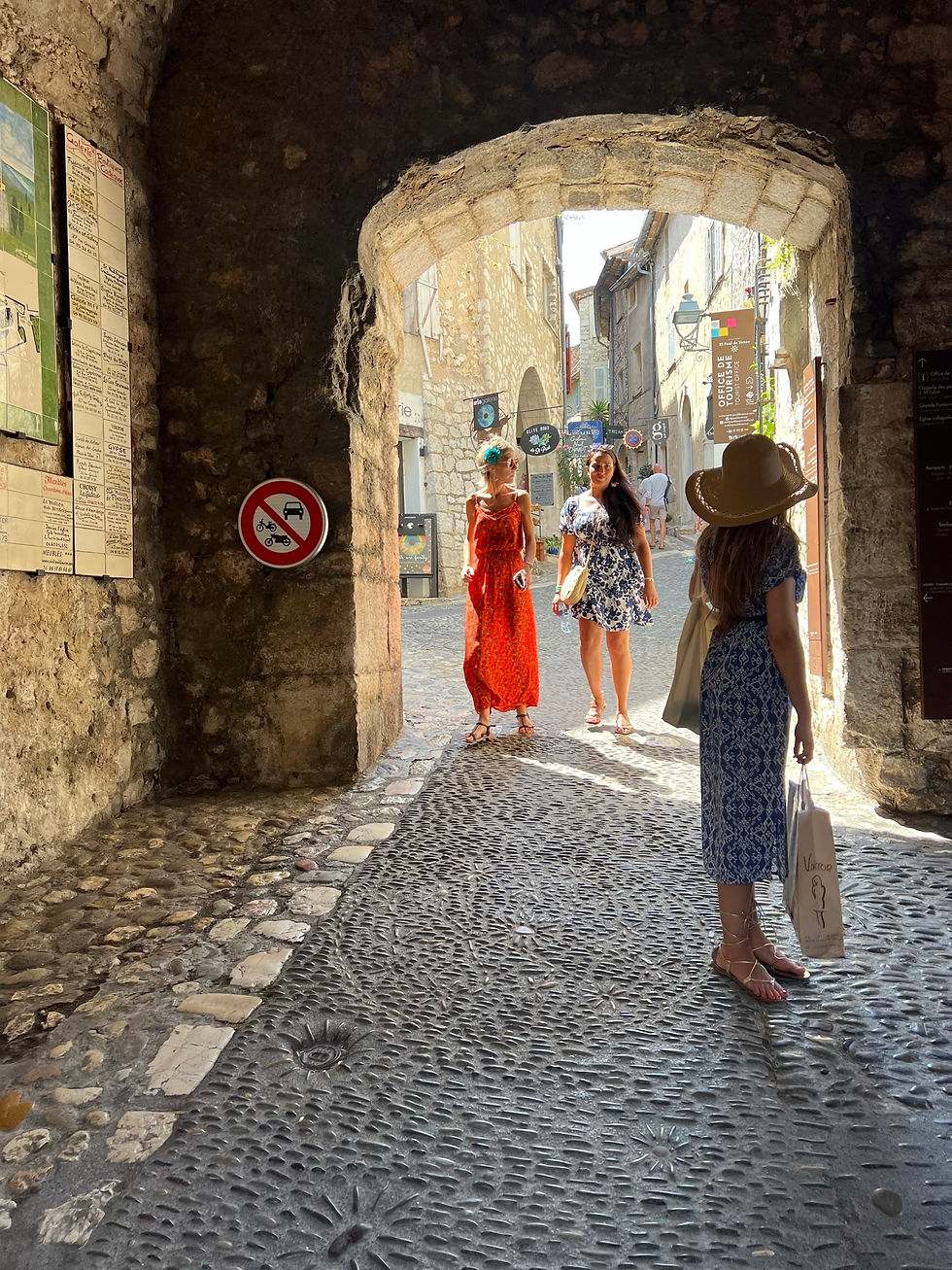La Provence: Grasse & St. Paul-de-Vence
- Ann De Corte
- Aug 25, 2023
- 3 min read
Updated: Feb 12
Grasse is a town located in the Provence-Alpes-Côte d'Azur region of southeastern France. Geographically, Grasse is about 18 kilometers (approximately 11 miles) north of the city of Cannes and roughly 40 kilometers (about 25 miles) west of Nice. It's positioned between these two well-known cities along the coast. The town's elevated location provides it with picturesque views of both the surrounding countryside and the Mediterranean Sea in the distance.

Grasse has a rich history of perfume production dating back centuries and is known for its fields of fragrant flowers, including roses, jasmine, and lavender.
The Fragonard Perfume House is a distinguished name in the world of fragrance, rooted in the heart of Grasse, a town renowned for its historical connection to perfumery.
Why the name Fragonard?
The entrepreneur Eugène Fuchs decided to pay tribute to the most famous native of Grasse: Jean-Honoré Fragonard, an 18th-century French painter (French rococo) famous for his romantic and captivating artworks.
Eugène also wanted to thank the town Grasse to welcome him and his family, and to identify his perfumery with the refinement of the 18th century arts. Another interesting detail for the choice of the name: King Louis XV's favorite painter, François Fragonard, was the son of a Grasse perfumer and glove maker.
The brand's commitment to artistry is reflected not only in its fragrances but also in its exquisite packaging and presentation.
Fragonard house has 3 factories:
The historical factory built in 1926,
The factory laboratory in Eze built in 1968
The flower factory that we visited was built in 1986.
After the guided tour in the flower factory, we visited the charming medieval village of St. Paul-de-Vence, that has long captivated visitors with its historic beauty and artistic ambiance. This hilltop village boasts narrow winding streets, ancient stone buildings, and stunning views of the surrounding countryside. St. Paul-de-Vence has been a haven for artists and creatives for decades, attracting the likes of Marc Chagall, Henri Matisse, and Pablo Picasso, Dufy and Modigliani who found inspiration in its tranquil setting. Marc Chagall remained in the village for 19 years and is buried in the local cemetery. The village is also renowned for its vibrant arts scene, with numerous galleries, studios, and artisan shops that showcase a variety of works, from paintings and sculptures to ceramics and textiles.

We only had one hour to walk around in this beautiful village and that was really too short. However, I bought some essential oils from a local shop such as lavender, lavandin and ylang ylang. I love the complex, sweet, floral scent of this lavender produced in the Provence that is sharp and refreshing similar to that of fresh cut flowers.
There are two types of Lavender. The Lavandula angustifolia grows at higher altitude, is a shorter bush and is the one used for its medicinal properties, expensive perfumes, etc. To make 1 liter of lavender, you need 130 kg of lavender flowers. Some of the medicinal properties of lavender are stress, headaches, insomnia, sun burns, sore throat, rheumatism, sore muscles after sports.
The lavandin is a bigger bush, has no medicinal properties and is used to give a lavender scent to cleaning products, soaps, et.
The quality of lavender essential oil is determined on the levels of its main chemical constituents:
Linalool: very potent odorant and largely responsible for the gorgeous floral scent.
Linalyl acetate: sweet, fruity and slightly citrusy aroma. High content makes it ideal for soothing skin and for creating a sense of harmony of body and mind.
Camphor: higher content is recommended for use in cosmetics and personal care products.
The higher percentage of Linalool and Linalyl acetate, the higher the quality of the lavender.
The chemical composition of the lavender varies from batch to batch, due to changing factors such as temperature, climate, humidity, precipitation and the overall environment.
If you want to buy a lot of lavender, this is a supplier I would recommend.
I love to work with lavender essential oils and almost use it in all the products I make: roll-ons, inhalers, salves, massage lotions, cremes, gels, scrubs, candles, room sprays, etc.
Here is an excellent article of Holly Brandenberger in which explains clairly the difference between lavender and lavandin: "20 reasons to love lavender"
Research shows that within 3 minutes of smelling lavender, participants
reported improved mood,
had decreased anxiety scores,
felt significantly more relaxed,
had increased beta waves in EEG.

_edited.png)



Comments